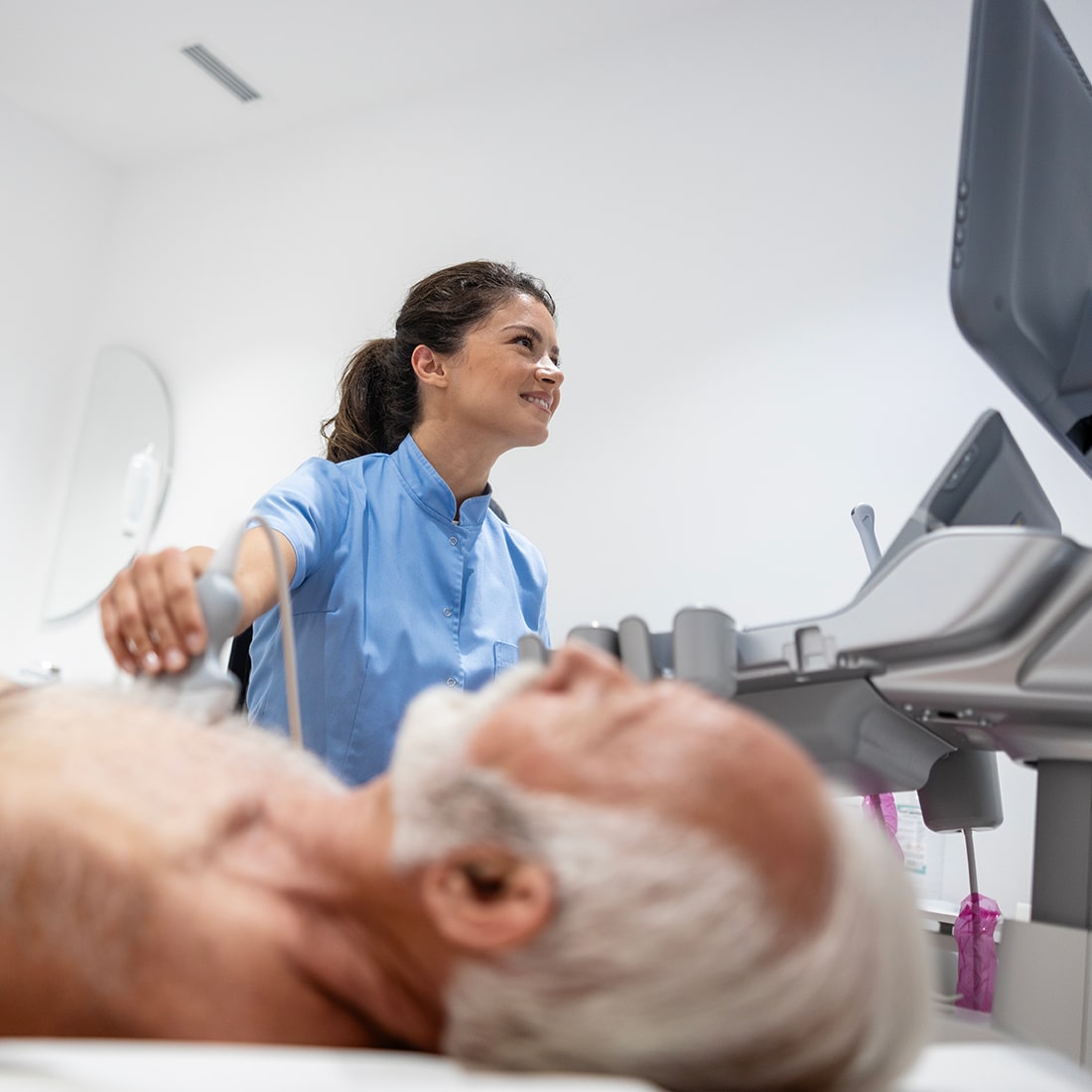
MRI
What is a magnetic resonance?
Magnetic resonance is a cutting-edge diagnostic imaging technique that, with the help of a magnetic field and radio waves, provides high-resolution images of the human interior without using harmful ionizing radiation. It is used in the diagnosis of tumors, inflammation, degenerative changes, injuries, assessment of vascularization, presentation of anatomical structures and relationships of basically all parts of the body.
How to prepare for an MRI scan?
It is very important that patients or their companions have information about possible metal or electronic implants in the body (pacemaker, defibrillator, insulin pumps, cochlear implants, stents, heart valves, clips, prostheses…) or foreign objects in the body (shrapnel, metal shavings…) and they must inform the technician or doctor about it before the examination. Before the examination, patients can eat and drink normally (except for specific examinations when this will be emphasized), and after the examination, they can continue their usual activities without interruption. We recommend patients to wear comfortable clothes. Items such as wristwatches, cell phones, belts, keys, jewelry, credit cards, glasses, hearing aids, and others must be removed before entering the examination room.
What to expect during an MRI scan?
Imaging is completely painless and without the use of harmful ionizing radiation. It usually lasts up to 30 minutes, rarely longer in cases where the specificity of the examination or pathology requires it. The examination is performed in a room with optimal air conditioning and ambient light to make the patient feel comfortable during the examination. With assistance from the technician, the patient lies down on the movable, upholstered table of the apparatus, which is then brought into an adequate position for imaging. During recording, radio waves are emitted based on which the image is generated. The emission of these waves produces buzzing and banging sounds, and this is completely normal. In some cases, the table may be moving during the examination. During the scanning, the patient is under constant visual supervision of the technician with possible communication. For some examinations, the technician will instruct you when to hold your breath. Certain examinations involve intravenous administration of contrast, which you will be informed about in due time. It is of the utmost importance that you remain calm and still during the examination. Any movement can lead to insufficient quality images and the need to repeat part or the entire examination.
Is MRI examination safe for health?
To this day, there are no known negative effects of magnetic resonance imaging, so the examination can be carried out without hindrance in both pregnant women and children. Images are produced with a magnetic field, unlike X-ray or CT scanners that use ionizing radiation that can harm the body. If you know or suspect that there are metal objects in your body, please be sure to notify the staff. If necessary, you can request to stop the review at any time.
Which MRI machine is used at Life Scan diagnostic center?
Our center uses a state-of-the-art MRI machine, the latest generation Siemens Magnetom Sempra with a strength of 1.5 Tesla, which is equipped with cutting-edge Siemens software that has Deep Resolve technology based on artificial intelligence that improves image quality while shortening the duration of the examination.
How can results be delivered?
After the reading, the result can be taken at the Life Scan diagnostic center or sent to an e-mail address. Recordings of the examination are received in digital form on a USB drive.


Diagnostic ultrasound
What is ultrasound (US)?
Ultrasound, or medical sonography, uses high-frequency sound to produce images of internal organs. It represents one of the most used diagnostic methods today. The method is fast, affordable, painless, and completely safe, so everyone, including children and pregnant women, can be examined easily.
How to prepare for an ultrasound examination?
If an ultrasound of the abdomen is performed, only liquids (except carbonated drinks) can be consumed before the examination. Refrain from eating at least 6 hours before examination, because it is necessary to reduce flatulence (presence of gases in the gastrointestinal tract), which will enable a better visualization of abdominal organs. It is also necessary for the bladder to be sufficiently filled with urine to be able to adequately examine the organs of the small pelvis, so it is recommended to drink enough fluids and refrain from urinating before the examination. If a thyroid gland is examined, a color doppler examination of blood vessels of the neck or other ultrasound examinations are performed, no prior preparation is necessary.
What to expect during an ultrasound examination?
The ultrasound imaging itself is very simple, the doctor places the probe next to the part of the body that is being examined. The probe produces and directs ultrasound waves toward the interior of the body, which are then returned to the probe and processed in a computer that interprets the waves into an image of the internal organs and structures visible on the monitor of the ultrasound machine. During the examination, a water-based gel is used for contact between the probe and the patient’s body, which is odorless and does not leave stains.
Is the US examination safe for health?
During imaging, the ultrasound machine uses sound waves to obtain an image, and it is completely safe, all patients can be scanned, including children and pregnant women.
Which ultrasound machine is used at Life Scan diagnostic center?
Our center uses a state-of-the-art ultrasound color doppler device of the latest generation Siemens Acuson Juniper with 4 probes.
How can results be delivered?
After examination and interpretation by the radiologist, the report is received immediately and sent to an e-mail address.
